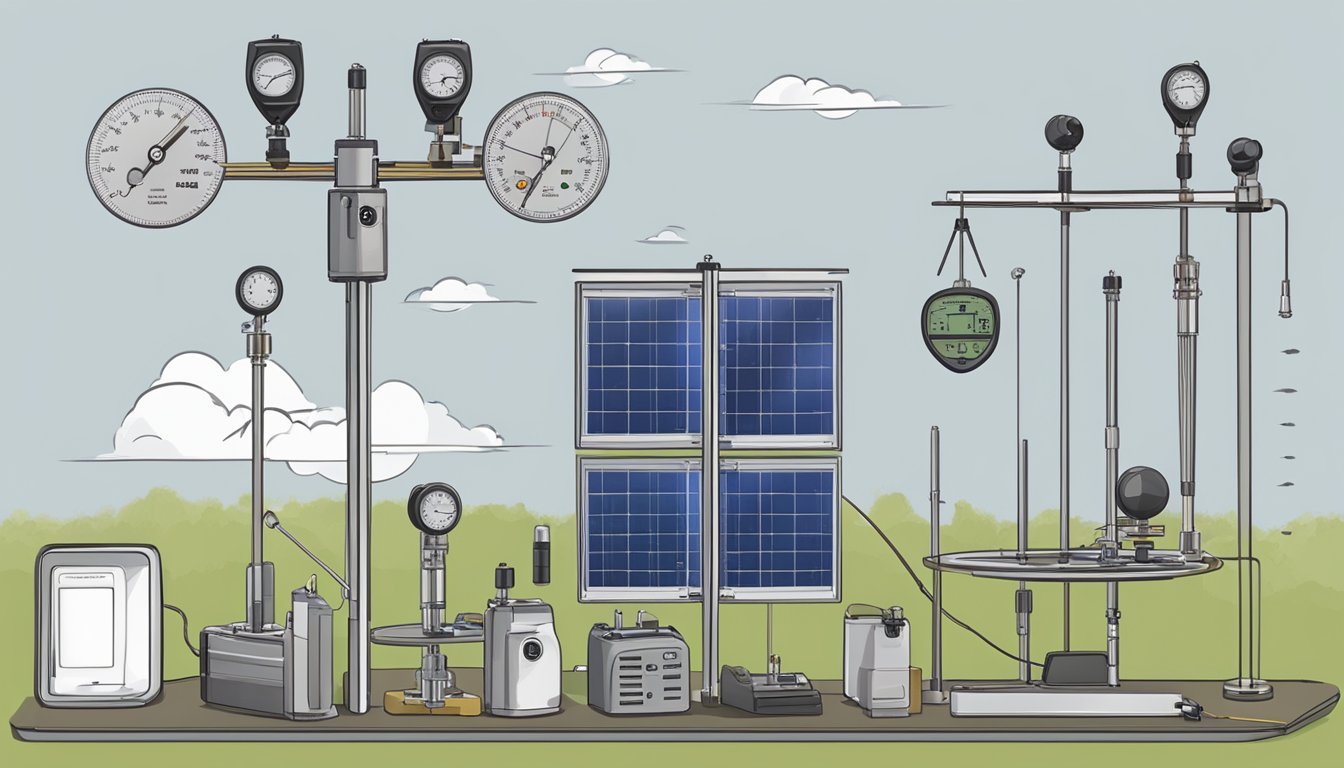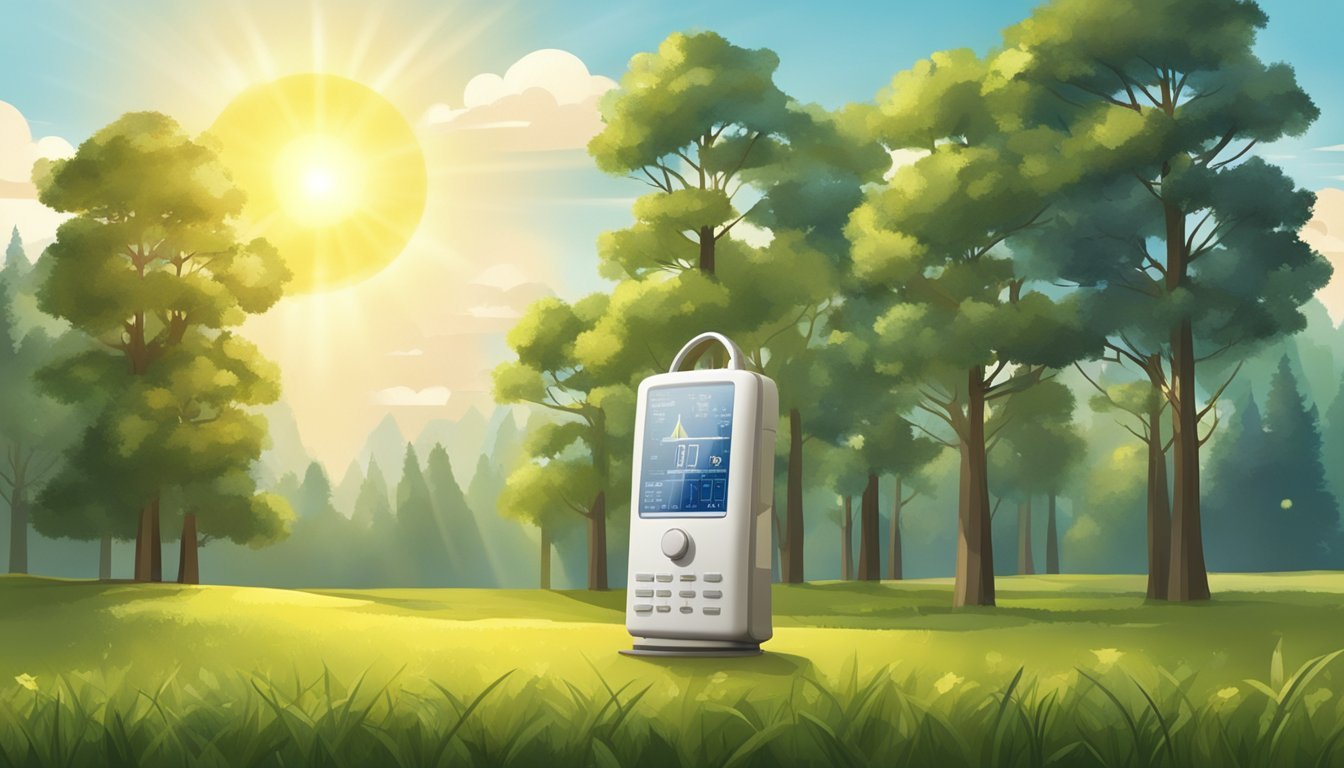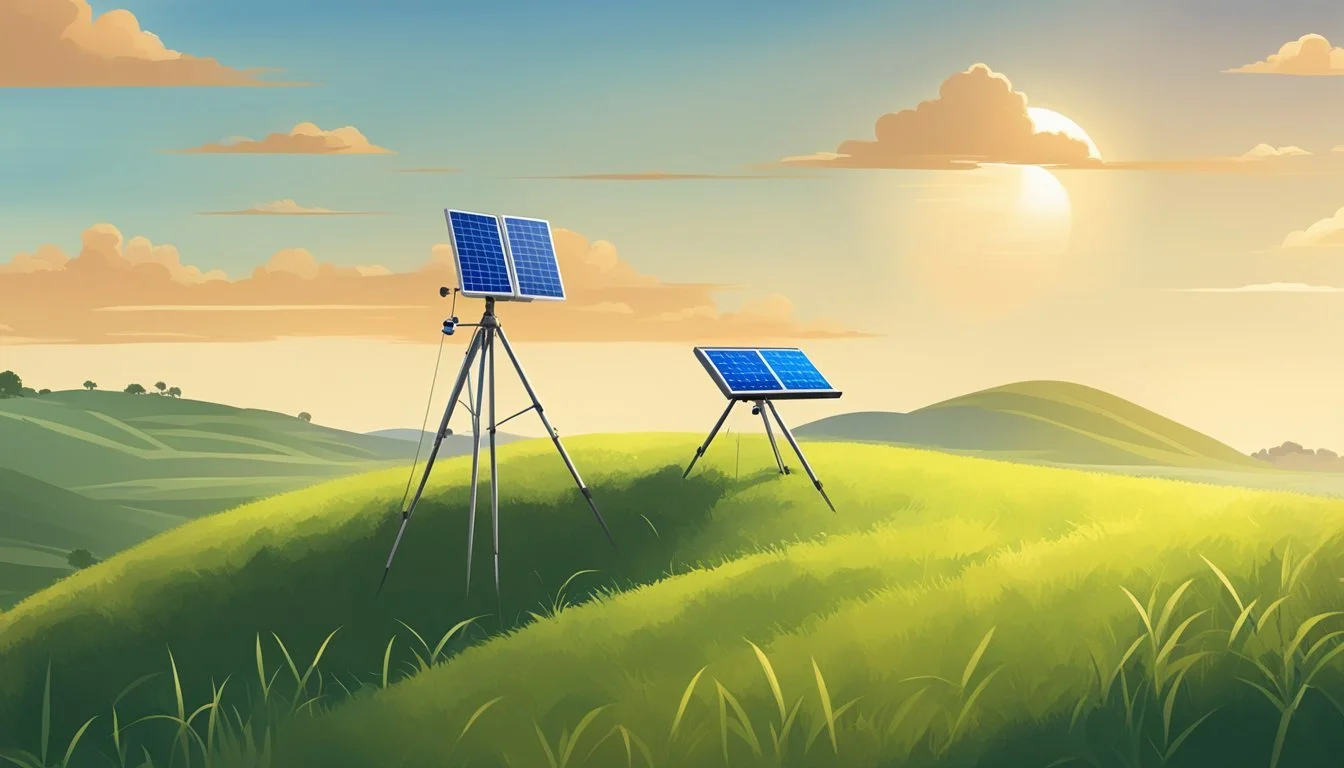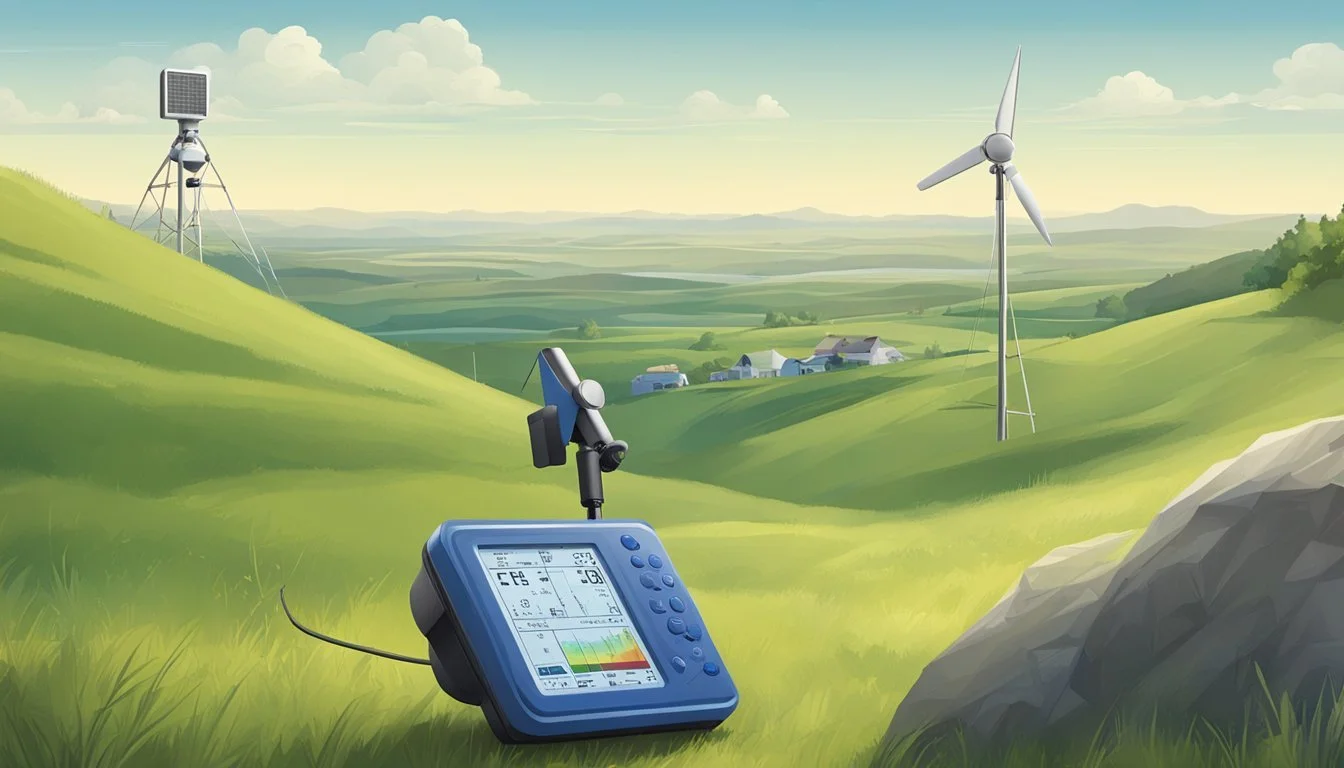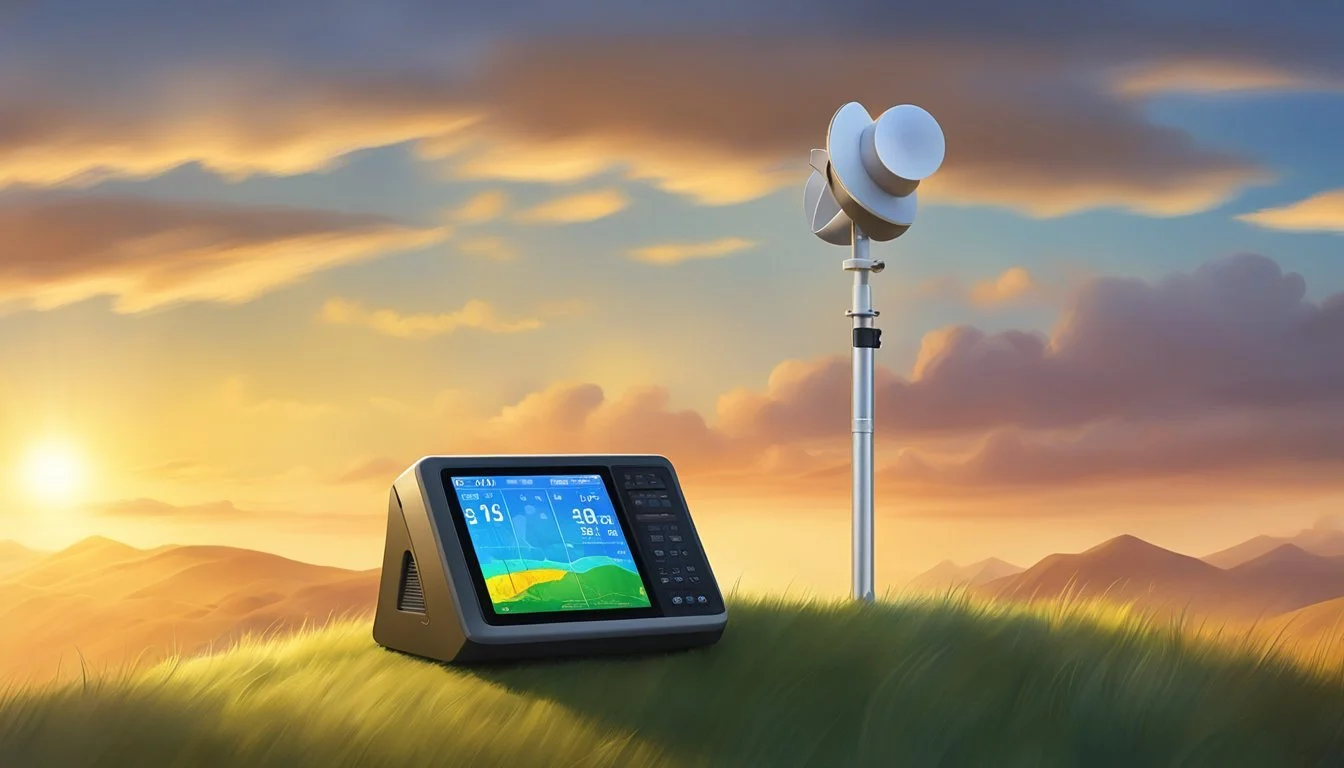The Ultimate Guide to Using a Portable Weather Station
Mastering Local Climate Insights on Your Homestead
Portable weather stations have revolutionized the way homesteaders and small-scale farmers monitor and respond to local weather conditions. With advances in technology, these compact devices provide a wealth of information, from wind speed and humidity to barometric pressure and temperature. Access to real-time weather data assists in making informed decisions that can influence agricultural practices, safeguard livestock, and manage resources more effectively.
Understanding how to utilize a portable weather station is crucial for tracking and forecasting weather patterns on a homestead. These devices not only offer immediate climatic conditions but also compile data over time, allowing users to identify trends and make predictions. With a variety of sensors and customizable features, portable weather stations cater to the specific needs of a homestead, delivering tailored insights that can enhance operational success.
Accurate weather tracking empowers homesteaders to optimize planting schedules, protect against adverse weather, and plan outdoor activities. By harnessing the capabilities of a portable weather station, individuals gain the upper hand in managing the challenges and opportunities presented by their local environment.
Understanding Portable Weather Stations
Portable weather stations provide real-time, location-specific weather data. They offer crucial insights into various environmental parameters that are essential for homestead planning and weather preparedness.
Key Features of Portable Weather Stations
Portable weather stations come with several key features that cater to the needs of individuals tracking local weather conditions. These features include:
Wind Measurements: Stations often provide anemometer readings to gauge wind speed and direction, with some models offering accuracy within +/-2% of the actual reading.
Temperature Readings: A common feature is the ability to measure ambient temperature, generally with an accuracy of +/-3°F.
Humidity Sensors: Most portable weather stations include a hygrometer with operational ranges typically between 10% and 95% humidity.
Barometric Pressure: Barometers are integrated into devices to help predict weather changes by measuring atmospheric pressure.
Rainfall Tracking: For precipitation, these stations can include rain gauges to measure the amount of rainfall over a period.
Technology advancements have led to the inclusion of digital displays and connectivity features that enable users to monitor and record data with ease.
Types of Weather Stations
There are two primary types of portable weather stations, each catering to different user needs:
Handheld Weather Stations:
Compact and typically focused on core measurements like wind speed, temperature, and humidity.
Preferred by on-the-go users such as hikers or outdoor enthusiasts.
Wireless Weather Stations:
Offer more comprehensive data collection, often including additional metrics like solar radiation and UV index.
Suitable for users who prefer to monitor weather conditions remotely and share or analyze data digitally.
Installing Your Portable Weather Station
Proper installation is vital for obtaining accurate weather data from a portable weather station. The following subsections cover strategic placement, essential mounting advice, and ways to mitigate the influence of obstructions on your readings.
Choosing the Right Location
The ideal location for a portable weather station is an unobstructed area that exemplifies the local climate. For anemometer height, 33 feet above ground level is standard to avoid turbulence from nearby structures. The rain gauge should be positioned with consideration for splashes; 4-6 feet above ground level is typically sufficient to prevent false readings from nearby surfaces.
Mounting and Setup Tips
When mounting a weather station, one should ensure stability and optimal exposure to the elements. Use a mounting kit, such as an EZ-30-12, to secure the station. It's advisable to test run the weather station for a week in a temporary location to confirm it transmits data without issues.
Height: The mounting height must be sufficient to minimize the impact of ground temperature and reflexive heat from the surface.
Materials: Use durable materials for masts and brackets that can withstand diverse weather conditions.
Dealing with Obstructions
Obstructions can drastically alter the data collected by a portable weather station. To address this:
Anemometer Placement: It should be mounted at a height of 33 feet above the ground and a distance of at least 10 times the height of nearby obstructions.
Radio Interference: Keep the station away from sources of electronic interference to ensure accurate transmission of data between sensors and the display unit.
By meticulously choosing the location, mounting the weather station securely, and accounting for possible obstructions, one can establish a reliable and efficient system for tracking local weather conditions.
Weather Station Components and Sensor Calibration
A portable weather station combines various sensors to measure local weather conditions accurately. Proper calibration and regular maintenance of these sensors are crucial to ensure reliable data.
Sensors and Their Functions
Humidity Sensor: Measures the amount of water vapor in the air, usually expressed as a percentage.
Anemometer: Records wind speed and sometimes wind direction, essential for predicting weather changes.
Thermometer: Provides temperature readings, which can affect many aspects of homestead living.
Barometer: Tracks atmospheric pressure, a key indicator of weather fronts and patterns.
Each sensor plays a specific role in monitoring the environment, providing homesteaders with valuable insight into potential weather changes.
Calibration for Accurate Readings
Calibration is a process that ensures the readings from weather station sensors are as accurate as possible. It involves adjusting the sensors to align with known standards.
Sensor Type: Humidity Sensor
Calibration Requirement: Check against a known moisture source.
Sensor Type: Anemometer
Calibration Requirement: Compare with calibrated instruments.
Sensor Type: Thermometer
Calibration Requirement: Adjust using ice water and boiling water tests.
Sensor Type: Barometer
Calibration Requirement: Set to known sea-level pressure or compare with local weather service data.
Calibration must be performed periodically, especially after extreme weather events or noticeable drifts in data.
Maintenance of Weather Station Sensors
Regular maintenance is necessary to ensure the longevity and accuracy of sensors. Here’s a simple maintenance checklist:
Visual Inspection: Look for any signs of wear, corrosion, or damage.
Cleanliness: Keep sensors free from dust, cobwebs, and other debris that could impede their function.
Software Updates: Install the latest firmware updates provided by the manufacturer for digital sensors.
Professional Servicing: Consider manufacturer servicing for complex calibrations or repairs.
By adhering to a strict maintenance schedule, homesteaders can depend on their weather stations to provide accurate and timely data.
Powering and Battery Management
Managing power sources is critical for the seamless operation of portable weather stations. Users must ensure that the device's batteries are correctly selected and maintained, and they may also consider integrating solar power solutions for extended operating times.
Battery Types and Lifespan
Portable weather stations commonly employ two main types of batteries: rechargeable and disposable. Rechargeable batteries, such as Nickel-Metal Hydride (NiMH) or Lithium-ion (Li-ion), offer a convenient and cost-effective means of power, with lifespans ranging from 500 to 1000 charge cycles. Disposable batteries, on the other hand, typically provide one-time use with varying lifespans dependent on the technology used (e.g., alkaline or lithium).
Rechargeable Battery Lifespan: 500–1000 cycles
Disposable Battery Lifespan: Varies (dependent on battery technology)
Solar Power Solutions
Many modern portable weather stations incorporate solar panels as a self-sustaining power source. Solar panels are capable of harnessing sunlight to charge built-in capacitors or rechargeable batteries during daylight hours, usually requiring about 4-6 hours for optimal charging. This stored energy is then utilized to power the station's sensors and other electrical components.
Daylight Charging Requirement: 4–6 hours
Backup Power: Rechargeable battery
Regular Battery Maintenance
Regular maintenance ensures prolonged battery life and station reliability. Users should routinely check battery levels and health, clean terminals to prevent corrosion, and follow the manufacturer's instructions for optimal charging practices. Stations should be placed where they can receive adequate sunlight for solar-powered units, and batteries should be stored at moderate temperatures to avoid capacity loss.
Maintenance Checks: Battery levels, terminal cleanliness, charging practices
Placement: Adequate sunlight for charging
Storage Temperature: Moderate, to prevent capacity loss
Weather Data Interpretation
Portable weather stations arm homesteaders with critical data to make informed decisions about agricultural practices and daily activities. This section will focus on how to interpret the core elements of local weather conditions: temperature and humidity, wind measurements, and rainfall and barometric pressure data.
Reading Temperature and Humidity
Homesteaders monitor temperature to understand the thermal conditions affecting their crops and livestock. Modern weather stations typically display temperature in degrees Fahrenheit (°F) or Celsius (°C). Humidity, expressed as a percentage, reveals the amount of moisture in the air, which can influence plant growth and animal health. For instance, a reading of 75% humidity indicates that the air contains 75% of the maximum amount of water vapor it can hold at that temperature.
Measurement: Temperature
Ideal Range for Agriculture: 70°F - 85°F (21°C - 29°C)
Measurement: Humidity
Ideal Range for Agriculture: 30% - 60%
Understanding Wind Measurements
Wind speed and direction are pertinent in gauging potential evapotranspiration and assessing the risk of soil erosion on the homestead. Wind speed is often measured in miles per hour (mph) or meters per second (m/s). Portable weather stations provide the flexibility to analyze wind data directly and make immediate adjustments to farming practices as needed. A stable wind measurement is crucial for accurate interpretation.
Wind Speed: Noted in mph, values < 15 mph indicate light winds suitable for most agricultural tasks.
Direction: Reveals where the wind originates, affecting pollination and how weather fronts move in.
Rainfall and Barometric Pressure Data
Rainfall measurements are vital for watering schedules and understanding irrigation needs. Rain is typically measured in inches or millimeters (mm), while barometric pressure denotes atmospheric pressure, affecting weather patterns and forecasting precipitation. An increase in barometric pressure generally hints at fair weather, while a decrease suggests an approaching storm.
Measurement: Rainfall (in/mm)
Significance: Indicates watering requirements for crops
Measurement: Pressure (hPa)
Significance: Helps predict weather changes, such as storm arrival
Each of these components contributes to the overarching picture of weather on a homestead, and a proper understanding of how to interpret these metrics from a portable weather station is essential.
Advantages of Real-Time Weather Monitoring
Portable weather stations provide a stream of real-time data that is critical for making immediate and informed decisions on a homestead. This data can enhance safety and optimize the planning of outdoor activities.
Making Informed Decisions
Real-time weather data allows homesteaders to make proactive decisions to protect their crops, livestock, and property. By having access to up-to-the-minute weather information, such as temperature fluctuations and sudden changes in barometric pressure, they can take preventive actions against potential weather-related damage. This immediate information leads to:
Preventive Measures: Reacting promptly to changes like freezing temperatures to protect plants.
Protecting Livestock: Adjusting shelters in response to oncoming storms or heat waves.
Planning Outdoor Activities
Access to real-time weather data provides a layer of safety when scheduling outdoor tasks and recreational activities. Homesteaders can plan their day with a higher degree of certainty, adjusting their schedules according to weather forecasts. Key points include:
Data-Driven Forecasts: Using real-time information to predict the best time for planting or harvesting.
Safety Precautions: Monitoring weather updates to avoid dangerous conditions during outdoor ventures.
By continuously monitoring the weather, homesteaders can ensure their activities align with the conditions, maximizing both productivity and leisure time.
Connectivity and Data Sharing
Effective tracking of local weather conditions with a portable weather station on your homestead hinges on the station's ability to connect and share data seamlessly. The value of these stations is significantly enhanced by their connectivity capabilities, both wirelessly and through integration with broader networks and applications.
Wireless Connectivity Options
Portable weather stations often employ Wi-Fi as a primary method for transmission of data, making real-time data accessible on various devices. Most stations are designed to connect to a local Wi-Fi network effortlessly, ensuring continuous Wi-Fi connectivity for data sharing. There are typically step-by-step instructions provided with the device to facilitate a smooth connection process.
Integrating With Weather Networks
Once connected to a Wi-Fi network, many weather stations offer the option to integrate with established weather networks like Ambient Weather Network or Weather Underground. These platforms provide a venue for homesteaders to upload their weather data, contributing to a larger dataset and enabling access to weather information from around the globe. Integration usually requires setting up an account and entering device-specific details provided by the manufacturer.
Applications and Smart Home Integration
The data from portable weather stations can be monitored and analyzed through dedicated mobile applications designed to provide a user-friendly interface for weather tracking. Additionally, some weather stations are now compatible with smart home systems, such as integration with Amazon Alexa, allowing users to obtain weather updates and automate home responses to changing conditions simply through voice commands. This level of integration extends the functionality of the station to work seamlessly with the modern smart home ecosystem.
Troubleshooting and Maintenance
To ensure your portable weather station operates effectively, one needs a clear understanding of common issues and how to address them, along with a schedule for regular maintenance. Precision and reliability are achieved with proper troubleshooting and consistent upkeep.
Common Issues and Fixes
Incorrect Temperature Readings
Cause: Exposure to direct sunlight or proximity to heat sources.
Fix: Relocate the temperature sensor to a shaded and well-ventilated area.
Poor Radio Reception
Cause: Obstacles or electronic device interference.
Fix: Adjust the placement of sensors and receiver to minimize obstructions and distance from electronics.
Connectivity Issues
Cause: Battery or signal problems.
Fix: Remove and reinstall batteries after 20 minutes, check for correct battery placement and ensure signal path is clear.
Calibration
Cause: Inaccurate readings from sensors.
Fix: Enter the weather station's setup mode and navigate to calibration settings. Follow specific calibration procedures for each sensor.
Regular Maintenance Schedule
Weekly:
Test rain gauge accuracy by measuring a known amount of water.
Inspect and clean sensors to remove debris and ensure unobstructed operation.
Monthly:
Check all sensor batteries and replace as necessary.
Verify data consistency with local weather reports to detect any discrepancies.
Yearly:
Complete a thorough inspection of all components.
Re-calibrate all sensors to maintain accuracy.
Review and update the weather station's firmware if available.
Regular maintenance ensures a weather station remains a reliable resource for weather tracking, while timely troubleshooting maintains its accuracy. Each step is critical in preserving the integrity and longevity of the device.
Choosing the Right Portable Weather Station
Selecting a quality weather station involves understanding the array of features available and discerning which align with one's specific weather tracking needs on a homestead.
Features for Weather Enthusiasts
Weather enthusiasts should seek a portable weather station equipped with a comprehensive sensor array to monitor various environmental conditions. Crucial measurements include:
Temperature (Indoor and Outdoor)
Barometric Pressure
Wind Speed and Direction
Humidity Levels
Rainfall Amount
High accuracy is paramount for reliable weather information, with some models such as the HWH1002 offering accurate wind data to within +/-2%. Additional desired features can encompass atmospheric pressure readings, sunrise and sunset times, and other customizable measurements.
Tailoring to Your Specific Needs
One's specific needs inform the decision when choosing a weather station. Important aspects include:
Operational Ranges: For example, an operational humidity range of 10% to 95% and temperature range of 35°F to 110°F (-1°C to +43°C) might be necessary for certain climates.
Battery Requirements: A station that operates on a common battery type like CR2032 is advantageous for ease of maintenance.
Portability and Durability: Consider if the device, like the Kestrel 2500NV, is compact enough for hand-held use and robust enough for varied environmental conditions.
Additional Functions: For some, having a weather station with a large replaceable impeller, responsive temperature sensor, and altitude data will be critical, while for others, an easy-to-read display or night-vision-preserving backlight may be more important.
By identifying one's preferences and the types of weather information most relevant to their homestead, they can ensure the selection of an accurate and quality portable weather station that best fits their needs.
Advanced Topics and Additional Resources
For homesteaders seeking to optimize their weather monitoring, expanding their portable weather station's capabilities and tapping into expert knowledge are crucial steps. These enhancements can lead to more precise weather tracking and better decision-making for their properties.
Enhancing Your Setup with Additional Sensors
One can significantly improve the accuracy and utility of their weather station by integrating additional sensors. Ambient weather stations are often expandable, allowing users to add various elements like soil moisture sensors, UV and solar radiation sensors, and leaf wetness sensors which are particularly useful for gardeners. Here's what one might consider adding:
Soil Moisture Sensors: Essential for irrigation planning, they help in understanding the watering needs of crops.
UV/Solar Radiation Sensors: These inform users about the intensity of the sun's rays, which can impact plant growth and weather predictions.
Each sensor feeds data back to the display console, ensuring that one has access to all the information at a glance. By using a cohesive system, users can ensure that the technology works harmoniously, providing them with real-time updates and alerts through the station's applications.
Learning From Communities and Experts
Homesteaders are not alone in their quest for comprehensive weather insights. They should engage with online forums and local clubs where enthusiasts and meteorologists exchange information. This might include:
Online Forums: Places where one can find custom equipment setup advice, troubleshooting tips, and the latest in weather monitoring technology.
Weather Enthusiast Clubs: Local clubs often host experts with years of experience who offer workshops and one-on-one advice.
Accessing these resources can enhance one's understanding of weather patterns and how to best leverage portable weather station data for their homestead's benefit. Additionally, many manufacturers and communities offer advanced guides and tutorials which are invaluable for users who wish to delve deeper into meteorological science.
Conclusion
A portable weather station is a crucial investment for any homesteader looking to gain accurate insights into local weather patterns. It empowers users with real-time data such as humidity levels, temperature, wind speeds, and more. This information is vital for making informed decisions regarding crop planting, irrigation, and protecting livestock from extreme conditions.
Homesteaders can benefit from:
The precise wind data measurements
Thermometer and hygrometer integration for temperature and humidity
Extensive operational ranges, typically 35°F to 110°F for temperature
The selection of the right weather station hinges on several factors such as compatibility with existing devices, operational ranges, and the type of data required. Kestrel weather meters, for example, are known for their accuracy and a variety of sensors.
In building a weather station, one must:
Gather materials and components
Wire sensors carefully
Connect all components accurately
Configure the setup for optimal use
The synthesis of this information equips homesteaders with the ability to safeguard their investments and plan future activities with greater certainty. Using a portable weather station, they position themselves at an advantage, ready to adapt to weather changes swiftly. Their success in managing local weather conditions rests not only in the technology they use but also in their understanding of it.


